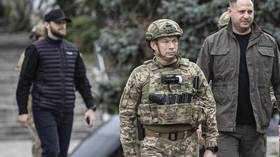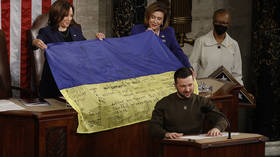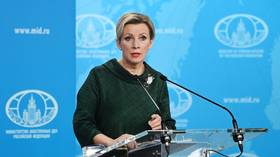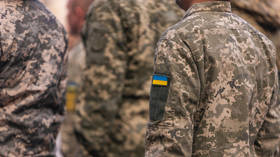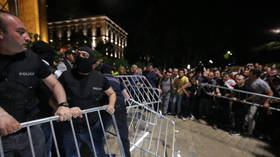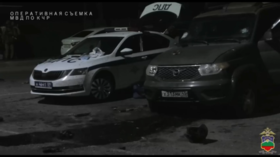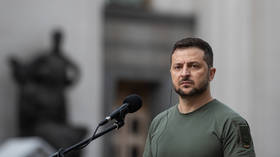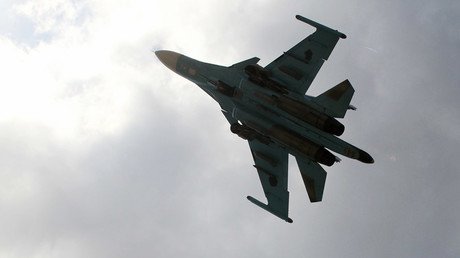Pentagon insists Russia violated Turkish airspace, calls for calm on both sides
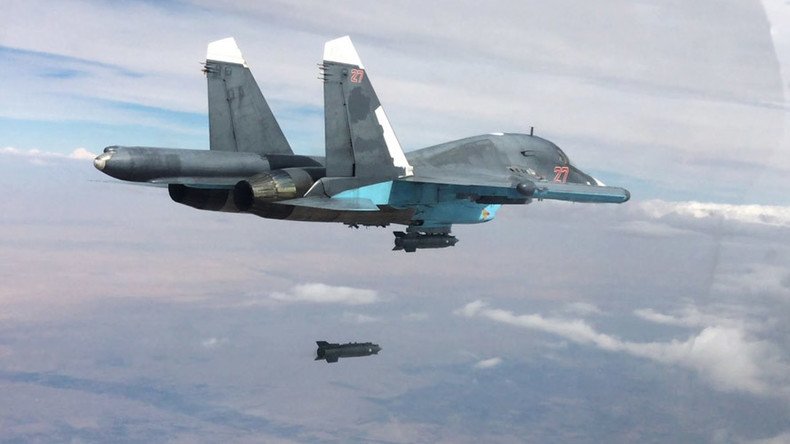
The US Department of Defense “can confirm” that a Russian Su-34 strike fighter violated Turkish airspace on Friday, the Pentagon’s spokesman said in a statement. Yet Washington has called on both Moscow and Ankara to “take measures to prevent escalation.”
“We are aware of reports and can confirm that yesterday another Russian combat aircraft violated Turkish — and NATO – airspace,” Pentagon spokesman Mark Wright told RIA Novosti in a written statement Saturday.
“We call on Russia to respect Turkish airspace and cease activities that risk further heightening instability in the region,” Wright’s statement goes on.
Taking the side of its NATO ally, Pentagon also stressed that it was important that Russia and Turkey “talk to each other and take measures to prevent escalation.”
Earlier the same day, the Turkish Foreign Ministry claimed that Russian Air Force’s Sukhoi Su-34 frontline bomber had violated Turkey’s airspace Friday, and summoned the Russian ambassador to the Foreign Ministry over the alleged air intrusion.
Turkey claims Russian plane violated its airspace again: Here’s all you need to know https://t.co/xYgZiGN3ITpic.twitter.com/fccWEcnE8S
— RT (@RT_com) January 31, 2016Russian Defense Ministry spokesman Major General Igor Konashenkov said in a statement Saturday that Ankara’s allegations are “proof-less propaganda,” explaining that Turkish airspace controlling radar stations can only determine the altitude, flight line, and speed of an aerial vehicle, but not its type or state affiliation.
To determine the national identity of a warplane (flying combat missions with its transponder turned off) requires the establishment of visual contact from another aircraft, Konashenkov stressed, adding that no visual contact with the Su-34 had been reported. Neither Russia’s air defense systems in Syria, nor Syria’s airspace controlling radar stations, had recorded any violations of the air border between Syria and Turkey, Konashenkov emphasized.
The Turkish Air Force has introduced its highest level of combat readiness, Orange, Turkey’s Milliyet daily reports.
The Turkish military usually uses three grades of combat readiness: White for a low probability of armed conflict, Yellow for military conflict possible and Red for when war is highly possible. Yet Turkey’s Air Force has another grade, Orange, for engagement possible at any given time, while Red indicates the beginning of combat operations for military pilots.
Last time an Orange alert was introduced was in mid-December 2015, when Turkish pilots at the Diyarbakır air base were getting ready for airstrikes against the Kurdistan Workers' Party (PKK) in Turkey and Northern Iraq.
Turkey ‘officially acknowledges’ attack on Su-24 was a planned step - Russian MoDhttps://t.co/U31GLmU70ipic.twitter.com/a3QAXyHk18
— RT (@RT_com) December 24, 2015On November 24, a Turkish F-16 fighter jet launched an unprovoked missile attack on an Russian Su-24 jet bombing terrorist positions in northern Syria along Turkey’s border and downed it on Syrian territory. Ankara also claimed that the Su-24 had violated the country’s airspace, albeit for 17 seconds.
Moscow has denied that any breach occurred and has accused the Turkish government of supporting terrorist forces in Syria.
Moscow has been carrying out an anti-terrorist operation in Turkey's neighbor Syria since September 2015 at the request of Syrian President Bashar Assad. Russia’s Su-27 and Su-30 fighter jets, Su-34 and Su-24 tactical bombers, and Su-25 attack aircraft have been carrying out airstrikes on Islamic State (IS, former ISIS, ISIL) and other Syrian terrorist groups.


